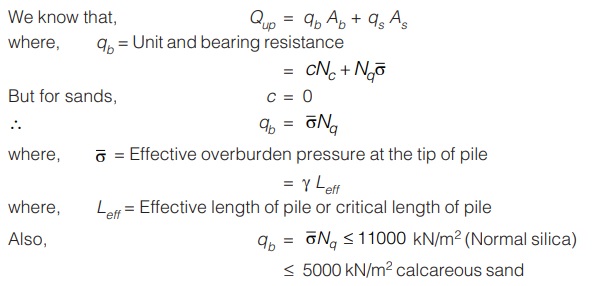Bearing Capacity
The load carrying capacity of foundation soil or rock which enables it to bear and transmit loads from a structure is know as bearing capacity.
Some of the factors affecting bearing capacity are:
1. Nature of soil and its physical and engineering properties.
2. Nature of foundation and other details such as the size, shape, depth and rigidity of the structure.
3. Location of the ground water table relative to the foundation level.
4. The total and differential settlements that the structure can withstand without functional failure.
5. Initial stress condition of the soil due to prehistory or due to the existing structure near proposed foundation.
6. Nature and type of loading i.e. centric or eccentric.
7. Mode of shear failure i.e. General, Local or Punching shear failure.
MODE OF SHEAR FAILURE
The three principal modes of shear failure have been identified based on the model test of strip footings on sand, which are as follows:
1. General shear failure
- General shear failure is usually associated with medium to dense or stiff soils of relatively low compressibility.
- At the time of failure, most of the soil within stress zone reaches in plastic state except central portion.
- Main characteristics of general shear failure are :
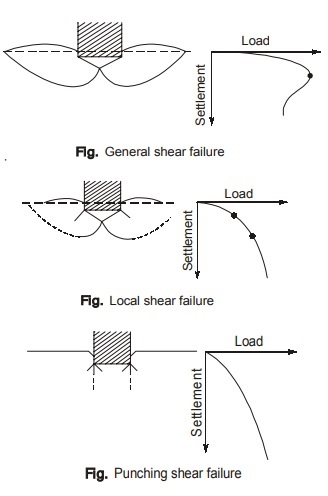
(a) A well defined slip surface developed on both or one side of the footing.
(b) A sudden, catastrophic failure accompanied by tilting of foundation.
(c) Bulging of ground surface adjacent to the foundation before failure.
2. Local shear failure
- Local shear failure is an intermediate failure mode characterized by well defined slip surface immediately below the footing but extending only a short distance into the soil mass.
- Since, the stress zone does not extend upto ground level. Therefore, only little bulging of soil around the footing is observed.
- Main characteristics of local shear failure are :
(a) Occurs in loose sands and soft clays in shallow foundations.
(b) Well defined wedge and slip surface only below the footing and no tilting and heaving is obtained on sides.
(c) Slip surface not visible beyond the edges of the foundation.
(d) Soil below footing is more stressed as compared to adjacent soil.
(e) When load v/s settlement curve is plotted, progressive failure is obtained.
3. Punching shear failure
- Punching shear failure is usually associated with pile footings in loose sand or soft clays.
- The soil below the foundation is highly stressed which gets separated by vertical shear from adjacent soil. Hence, adjacent soil will remain unstressed.
- Main characteristics of punching shear failure are :
(a) Poorly defined failure planes
(b) Soil zone beyond the footing is not affected or little affected
(c) There are no tilting and heaving of adjacent ground but large settlement are recorded.
(d) When load v/s settlement curve is plotted, progressive failure is obtained.
Ultimate Bearing Capacity Equation
- Ultimate bearing capacity of strip footing is given by the equation
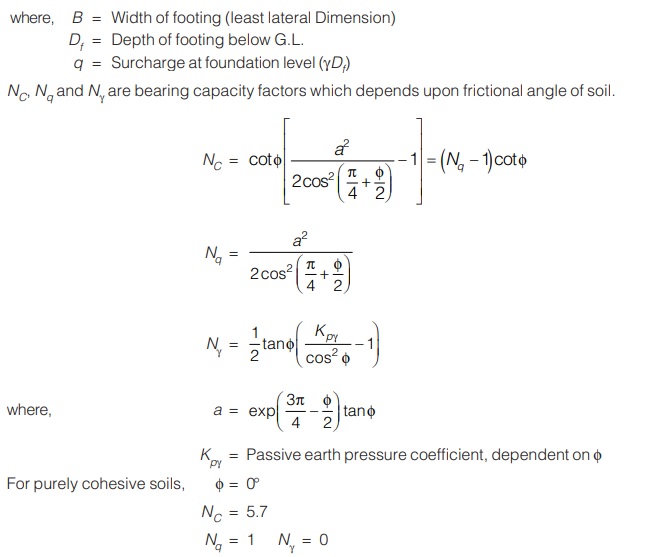
SKEMPTON’S METHOD
- Skempton proposed a simple expression for the net ultimate bearing capacity of saturated clay under undrained condition (φ = 0°)
- This theory can be applied for shallow as well as deep footings and the net ultimate bearing capacity is given by
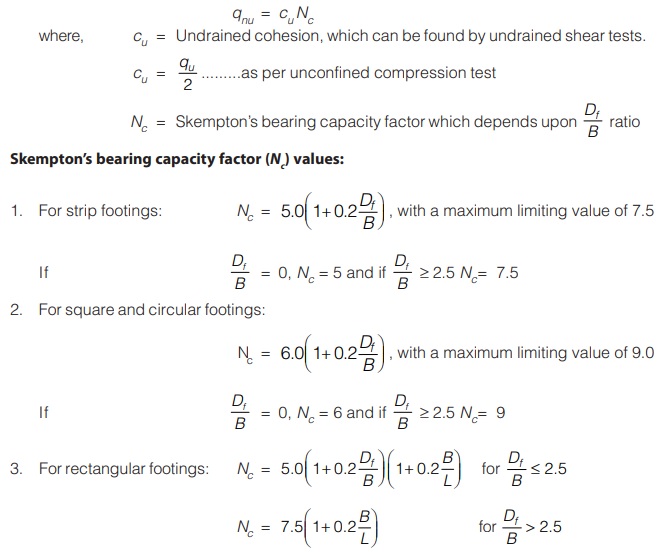

SETTLEMENT OF SHALLOW FOUNDATIONS
In shallow foundation total settlement can be divided into two parts
(i) Immediate settlement
(ii) Consolidation settlement
We already discussed the methods to calculate above settlements
Settlement Distribution and Contact Pressure
(i) Flexible footing over clayey soil
- In flexible footing, the contact pressure i.e. pressure at the interface between the footing and the soil is uniformly distributed.
- A uniform pressure produces a dish shaped pattern of displacement.
(ii) Rigid footing over clayey soil
- For rigid footings, the settlement has to be uniform over the contact area. Since, a flexible footing produces a dish shaped pattern in clay soil, the contact pressure must be more near the edge of the loaded area and less near centre, in order to produce a uniform settlement.
(iii) Flexible footing over Granular soil
- In granular soil, modulus of elasticity (E) varies across the width being maximum at the centre and minimum at edge. As E is maximum at centre, deflection is less at centre and E is less at edge, hence deflection is more at edge.
(iv) Rigid footing over granular soil
- For a rigid footing, where the settlement has to be uniform, the contact pressure is more near the centre than near the edges.
BEARING CAPACITY OF PILE
- The ultimate bearing capacity of a pile is the maximum load which it can carry without shear failure (punching shear failure) or excessive settlement.
- Load on a pile is partially carried by skin friction and partially by the resistance offered by the soil at the base of the pile called point resistance.
- Therefore ultimate bearing capacity of a pile Qup is given by
Qa = Qeb + Qsf
where, Qeb = Resistance due to end bearing or point resistance
Qsf = Resistance due to skin friction - The bearing capacity of pile, also depends on the methods of installation.
Allowable load on pile:
- The allowable load is the load which the pile can carry safely. It is equal to ultimate load on pile divided by FOS.
Qup = Qup / FOS - FOS generally varies between 2.5 and 4.0, but a factor of safety of 2.5 is considered satisfactory.
Piles in Clays
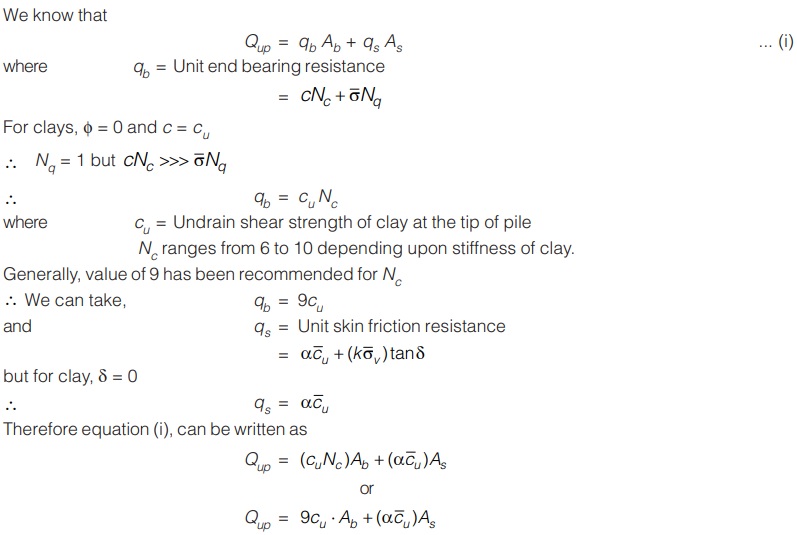
Pile in Sands
